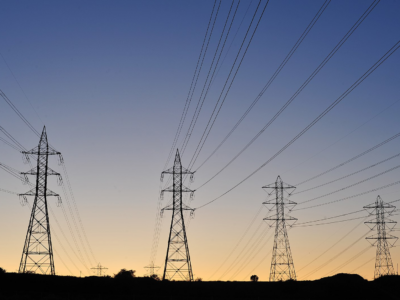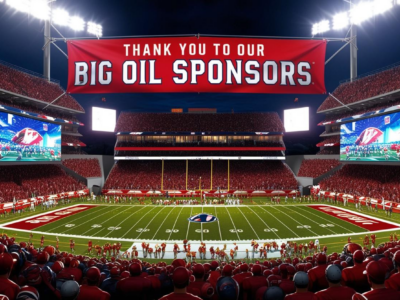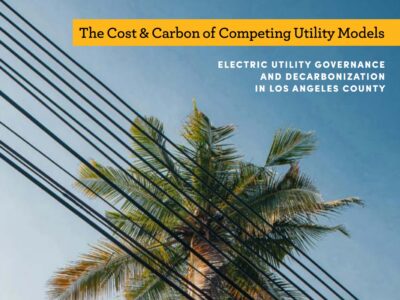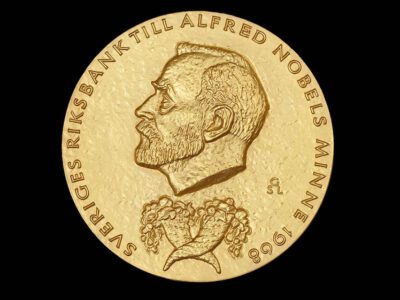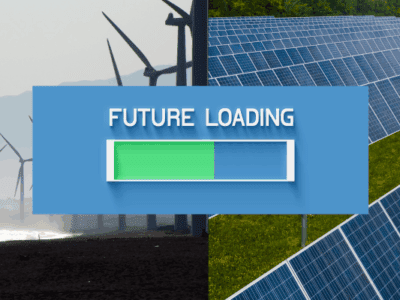Energy
3 Lessons for a Regional Western Electricity Market
California is paving the way for the creation of an independent regional organization to oversee Western energy markets. It can learn from mistakes made in other regions.
In case you missed it among all the other news, the California legislature passed AB 825 in September (and Gov. Gavin Newsom signed it as part of the big energy package), paving the way for the creation of an independent regional organization to oversee Western energy markets. This presents a whole set of interesting challenges …
Continue reading “3 Lessons for a Regional Western Electricity Market”
CONTINUE READINGGuess What? The Next 2 Weeks Are “National Energy Dominance Month”
October 17-31 has now been proclaimed to be an entire month, courtesy of Trump.
“National Energy Dominance Month.” So typical of Trump: a bungled exercise in foolish bravado. The “bungled” part is that they forgot to designate October as a special month until it was halfway over. The “bravado” saturates almost every sentence, combined with the fact that the blustering has no practical effect. And the “foolish” part is about bad energy policy and bad economics. To expand supply, he needs higher prices, but that would hurt him politically. And there’s no reason to think foreigners would pay them.
CONTINUE READINGLighting Candles in Dark Times: Environmental Law Centers in the Trump Era
These law school centers show it’s possible find ways to make a difference.
Environmental law have become vibrant parts of the law and policy ecosystem. At a time when despondency seems all too common, the work of these law school centers offers beacons of hope for the future of environmental protection. Some of that work is playing defense — pushing back against deregulatory efforts — while other work plays offense by identifying innovative directions for environmental policy. A comprehensive survey isn’t practical, but I’ll provide examples from several different centers.
CONTINUE READINGWhich is Better: LADWP or SCE?
New UCLA Law report, “The Cost & Carbon of Competing Utility Models,” contrasts municipally owned electric utilities and investor-owned utilities.
One of our three main areas of focus at the Emmett Clean Energy Law & Leadership (E-CELL) initiative is Ownership of Energy Resources: exploring how utility ownership structures affect cost, climate, and other outcomes. In June, we released a Pritzker Brief on this topic co-authored by our recent legal fellow, Ruthie Lazenby, as well as …
Continue reading “Which is Better: LADWP or SCE?”
CONTINUE READINGLearning from the Laureates
The 2025 Economics Prize, Technological Innovation, and the Energy Transition
In energy technology as elsewhere, Trump is hobbling American science with budget cuts and demands for political submission. The epitome of his approach is the decision to give political appointees rather than experts the ultimate decision on each project, replacing scientific merit with politics as the deciding factor. His war on science is also a war on future economic growth. And his effort to halt creative destruction is the pathway to a stagnant economy. By trying to prop up an incumbent industry threatened by new technologies, he’s undercutting a central driver of economic growth.
CONTINUE READINGHow broad does Clean Water Act 401 certification sweep?
Recent disputes over infrastructure projects highlights the importance of the question
Another issue for ping-pong governance over the past few years has been certification under Section 401 of the Clean Water Act. For those of you who are not deep into the weeds of the Clean Water Act, Section 401 requires (a) federal agencies that are issuing licenses or permits that (b) result in discharges to …
Continue reading “How broad does Clean Water Act 401 certification sweep?”
CONTINUE READINGProblem solved?
Bipartisan proposal for permitting reform from Problem Solvers Caucus is a good first step, but has much more work to do
The permitting reform conversation continues in Congress – this time with a long set of proposals from the bipartisan Problem Solvers Caucus, based on a range of conversations with different stakeholders and interest groups. There is much that is good in this set of proposals, but there are also proposals that require more thought, or …
Continue reading “Problem solved?”
CONTINUE READINGSolar and Wind are Winning
Two energy reports out this week paint a clear picture of the future that may await us.
Industrial policy moves slowly. Sometimes it takes months or years to understand the trajectory of global energy trends. Picture an oil tanker that requires a herculean effort just to shift course by a small degree — that’s what energy policy feels like much of the time. But then sometimes, you get a glimpse of the …
Continue reading “Solar and Wind are Winning”
CONTINUE READINGSigning AB 1167 Would be a Win for Energy Affordability
A bill that seeks to protect ratepayers from subsidizing utility lobbying still awaits Governor Newsom’s signature.
The 2025 legislative session has been a banner year for energy affordability legislation in California. The legislature passed—and the governor signed—a suite of six major bills that the governor and legislative leaders have championed in an effort to bring down energy costs for Californians. However, the job is not yet done. Governor Newsom has not …
Continue reading “Signing AB 1167 Would be a Win for Energy Affordability “
CONTINUE READINGAt a Loss for Words? Resist Climate Silence
The Drain is a weekly roundup of environmental and climate news from Legal Planet.
A few years ago, I was writing about how President Joe Biden was flying around the country to promote his landmark climate law without uttering the word “climate.” Seems so quaint. Now, we find ourselves in a place where “climate change” is on a list of banned words maintained by the U.S. Energy Department, along …
Continue reading “At a Loss for Words? Resist Climate Silence”
CONTINUE READING



